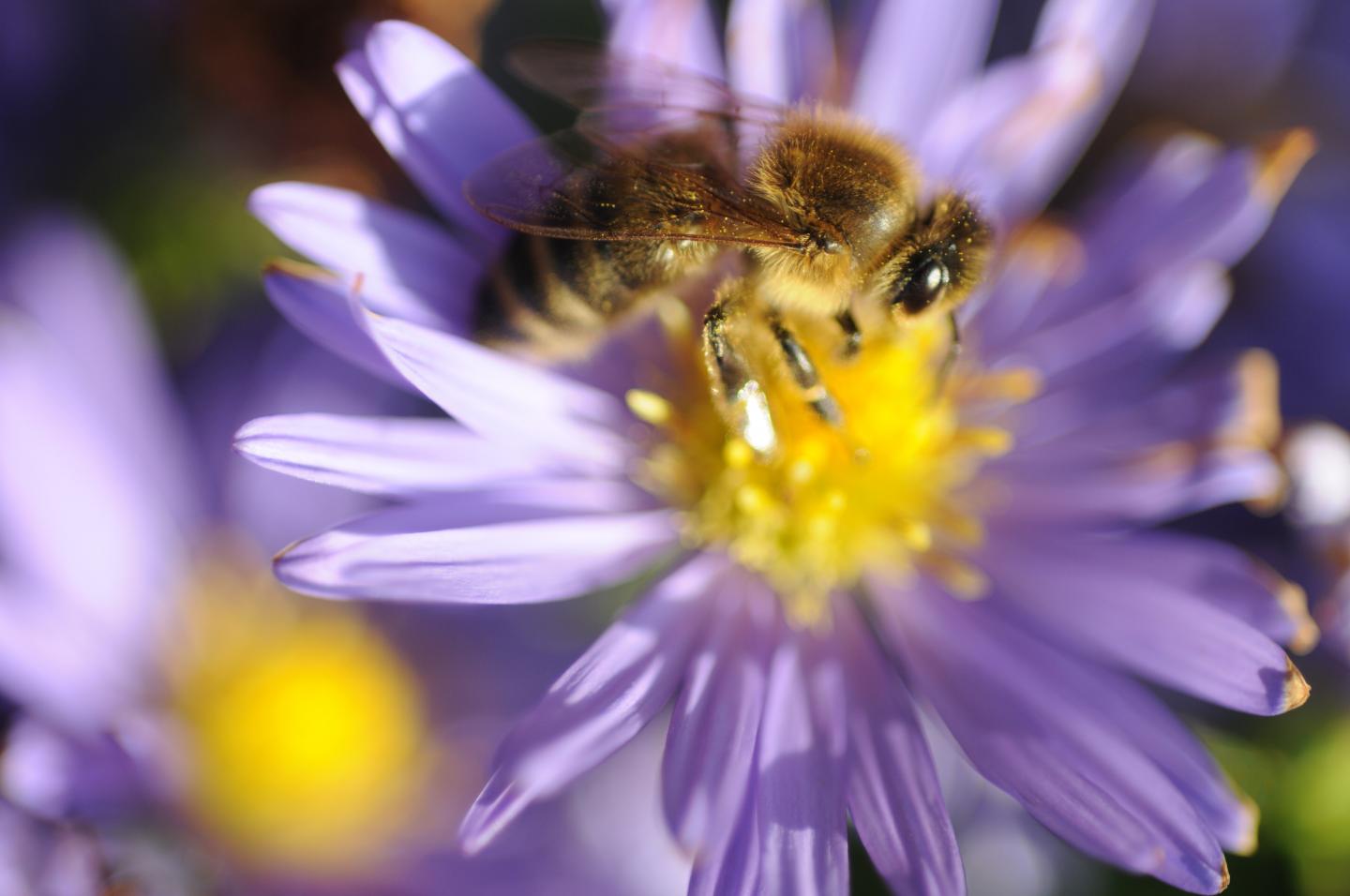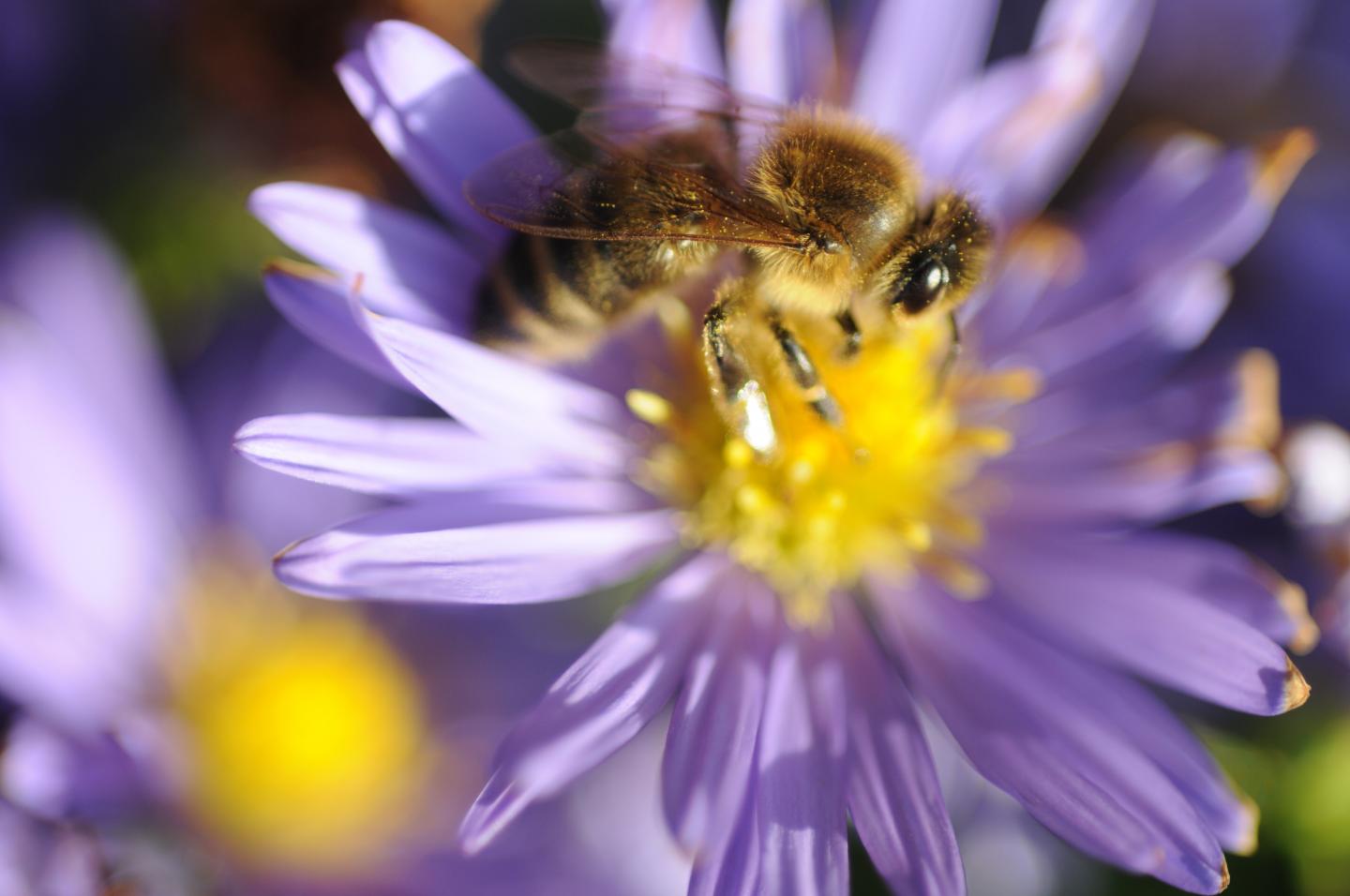
Credit: Photo: Gunnar Bartsch
Forager honeybees have a demanding job: Searching for nectar, honeydew and pollen, they permanently commute between beehive and flower meadow. Their circadian clock tells them among others when to arrive in time for the plant to open its flowers and when to rest because potential food sources are "closed".
The circadian clock also helps passing information about good foraging sites to other bees. Because the insects rely on the sun as reference point in navigation, the clock is used at a later time to calculate the flight route.
Nurse bees, too, do a highly strenuous job. This is not because they are out and about a lot, quite the contrary: It is the job of the young honeybee to feed older larvae with a jelly consisting of pollen and honey – non-stop. While they pursue their activities, the bees do not follow a 24-hour rhythm with alternating phases of rest and activity.
Publication in Open Biology
An international team of scientists from Israel, Germany and New Zeeland have looked into several interesting questions including how the circadian clocks of foraging bees and nurse bees work, which molecular mechanisms are responsible for their different behaviour and how the bee's clock network is structured.
Professor Charlotte Helfrich-Förster, Head of the Department for Neurobiology and Genetics at the Biocenter of the University of Würzburg, and her team of experts in insect timing also participated in the study. The scientists published their findings in the journal Open Biology.
Ill health due to circadian clock dysfunction
"Circadian clocks that control the daily rhythms are ubiquitous in animals. They enable organisms to anticipate predictable day-night changes in their environment," Charlotte Helfrich-Förster says. Just how important properly functioning clocks are becomes evident when they are dysfunctional, either for genetic reasons or due to environmental factors. "This increases the risk for various diseases such as cancer, metabolic disorders, mental disorders, heart attacks and infertility," the neurobiologist explains.
Nevertheless, some animals including Arctic mammals, open sea fish and social insects such as honeybees are active around-the-clock with no apparent ill effects The mechanisms allowing this remarkable natural plasticity have been largely unknown. The team of researchers was now able to shed light on some of the mysteries.
Gene activity under the microscope
"We generated and validated a new and specific antibody against the clock protein PERIOD of the honeybee Apis mellifera and used it to characterize the circadian network in the honeybee brain," Charlotte Helfrich-Förster outlines their approach. The antibody shows the spatial distribution of the clock network; its concentration allows drawing conclusions to the activity of the responsible clock genes.
One result: They found that the honeybee shares a number of features with the fruit fly Drosophila melanogaster and other insects. "This suggests common anatomical organization principles in the insect clock that have not been appreciated before," Helfrich-Förster says.
In the next step, the researchers measured the concentration of the PERIOD protein in the bees' brain over 24 hours to determine the temporal activity pattern of the circadian clocks. As expected, foraging honeybees that follow a day-night cycle exhibited strong rhythmic oscillations throughout the day. However, the researchers were surprised to find that the around-the-clock active nurses had the same rhythm in the protein concentration as the foragers. This supports the hypothesis that their circadian clock is ticking, too. This was all the more astonishing as previous experiments by the Israeli group had shown that this rhythm is missing at the gene level.
"When animals exhibit behavioural patterns that depend on the time of day, this is usually associated with changes of clock gene expression," Charlotte Helfrich-Förster says. Accordingly, the concentration of messenger RNA of these genes would have to vary. But this was not the case: "The measurements of the Israeli group had not revealed any or noticeably attenuated oscillations of the messenger RNA concentration of these genes in nurse bees. This is why we had assumed that their circadian clock is standing still," the scientists further.
Now this has turned out to be not true. The circadian clock of nurse bees operates at the protein level and is excellently synchronized with the day-night rhythm by external stimuli.
A functional clock is crucial
This finding matches other observations in the honeybee. Accordingly, arrhythmic nurses that are isolated from their hive rapidly switch to activity with circadian rhythms. Probably this is only possible because more than 160 potential pacemakers oscillate in the nurse brain in a 24-hour rhythm anyway (more than 540 in foragers) which underpins a circadian impact on many processes in their brain.
"These findings in nurse bees demonstrate that the activity patterns of the animals can be uncoupled from the circadian network," Charlotte Helfrich-Förster explains the central result of the study. At the same time, they support the hypothesis that a functioning circadian clock is necessary – even in animals that are active around-the-clock in a constant physical environment.
###
Media Contact
Charlotte Helfrich-Foerster
[email protected]
49-931-318-8823
@Uni_WUE
https://www.uni-wuerzburg.de/
Original Source
https://www.uni-wuerzburg.de/en/sonstiges/meldungen/detail/artikel/rund-um-die-uhr-aktiv-und-trotzdem-gesund/ http://dx.doi.org/10.1098/rsob.170047
############
Story Source: Materials provided by Scienmag





